Archive for July, 2022
Mice population models much bigger picture
However, this animal struggles to survive through harsh winters.
Tracking the population size and location of this mouse can serve as a “bellwether for climate change,” said Dr. Sean Maher, associate biology professor at Missouri State University.
“My graduate advisor shared his research on the animal, and got me hooked on small mammals,” Maher said.
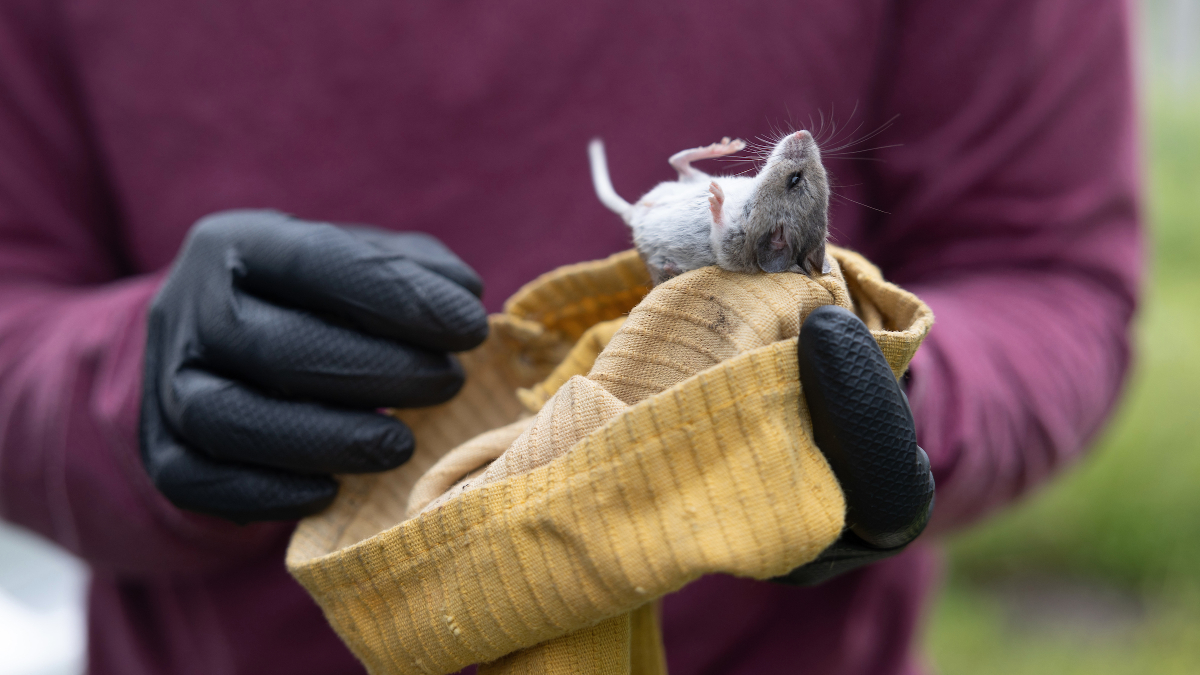
Dr. Sean Maher checks traps at Linden Prairie as part of a population study.
Maher studies scurrying mammals, primarily mice and rats, by catching and releasing them. His work is a snapshot in time of where these animals call home and gives an estimate of how abundant they are.
“One of the issues with wildlife biology is that just because you fail to find it doesn’t mean it’s not there.”
The information can be compared to previous or future research of a species or region to provide evidence of change or forecast trends.
“These small mammal communities can give us a baseline,” he said. “Twenty or 30 years from now, someone can survey the same prairie or glade and compare data. Then, you may see a different story – perhaps a species disappeared or a new species is present.”

Graduate students Sofia Orlando, left, and Emilyn Gilmore, right, flank Dr. Sean Maher during a population study.
Rare vs. not there
Maher’s work focuses on wildlife biology using statistical modeling and geographic information systems. The computer scripts he develops can answer questions about species dispersal 20,000 years ago or current species occurrences in a local glade system.
Emily Beasley, a 2018 MSU alumna and now a PhD student at University of Vermont, surveyed four glade systems for her thesis:
- Bull Shoals Field Station.
- Roaring River State Park.
- Mark Twain National Forest.
- Caney Mountain Conservation Area.
In each of those areas, she set traps in three to four glades of varying sizes to examine what species lived there.
Beasley co-authored an article with Maher on this research and published it in the Journal of Mammalogy. Based on this work, she was the recipient of the Annie M. Alexander Award from the American Society of Mammalogists, and it provided strong evidence of island biogeography theory.
“The most rewarding thing is seeing the students getting where they want to go. And I’m gratified when they can use me as the stepping stone to their career.”
At its root, this theory states larger islands have more species; smaller islands have fewer. An island, in this sense, simply means an isolated area.

Mice like these are at the center of Dr. Sean Maher’s studies.
“If it’s a really good year, you’re going to see more species. That’s what happened with Emily the first year; she was picking up extra species,” Maher explained. “If it’s a bad year, you’re going to get fewer species.”
Maher and Beasley’s work showed the counts could suffer or swell based on environmental disruptions. A good year for small mammals usually comes with more rainfall, causing trees to produce more of the mammals’ favorite meal: seeds.
In planning out the project, Maher advised Beasley to use a statistical model that accounted for detection of rare species.
“Her work was novel because it simultaneously accounted for whether you’re going to find a species and whether or not it’s there. You have to account for both of those things to get a good idea of presence,” Maher said. “If you’re catching a bunch of rare species, there are probably even more rare species that aren’t being sighted.”
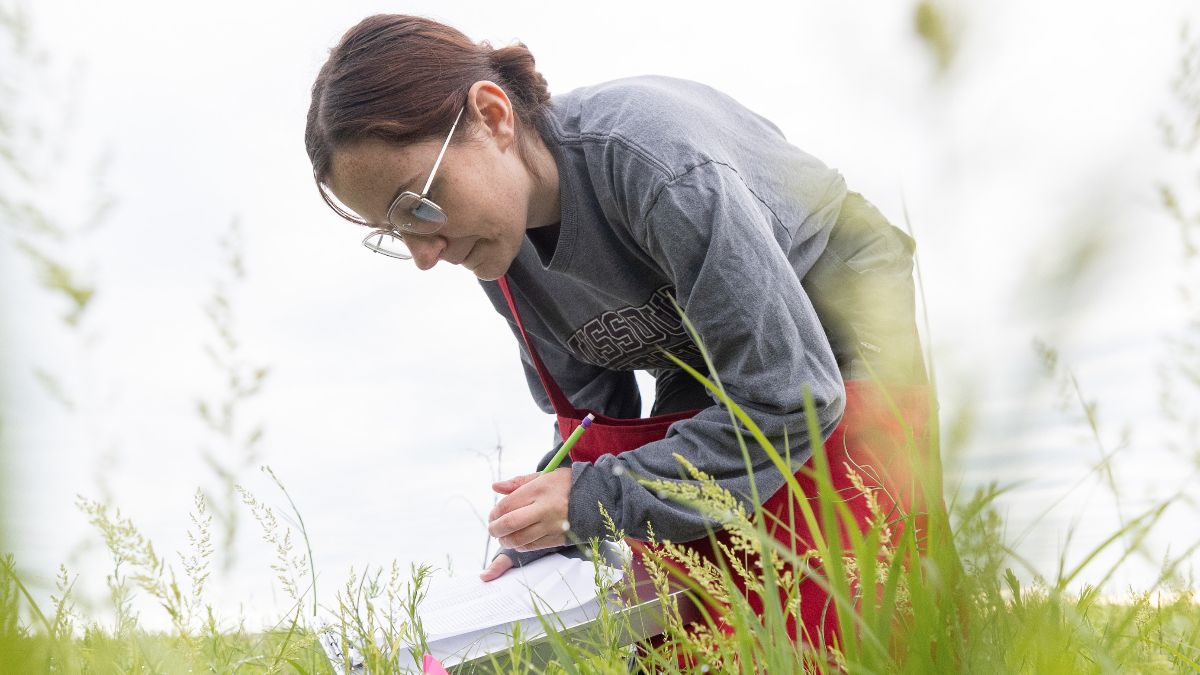
Student Sofia Orlando documents her findings as she examines the prairie lands.
Providing a baseline
Maher’s former student, Casey Adkins, is pursuing her PhD at the University of Nevada – Reno. She appreciated his insight, advice and guidance during the application to doctoral programs. Moreover, she appreciates what he brings to the scientific community.
“Sean’s work is unique because he not only studies communities and their interactions, but how these interactions may change throughout time and geographic space,” she said.
In the last decade, Maher published more than 15 articles detailing the lives of animals and parasites we often overlook.
He’s interested in parasites like ticks “because when you talk about small mammals, they are linked to ectoparasites,” Maher said.

Prairies like this are ideal habitats for the animals Dr. Sean Maher studies.
Virginia possums, for instance, feed on ticks. When a region has a healthy population of one, there will likely be fewer of the other.
Maher is quick to say, though, the linkages between mammals and ticks are still being formed. This is the focus of another current study.
Data collection on many regional species and habitats has been lacking. In many cases, the baselines were established within the latter part of the 20th century.
“Collecting data is important,” Maher said. “Just like in the case of the white-footed mouse, data tell us a story about the health of a forest or glade, as well as the climate.”
- Story by Nicki Donnelson
- Photos by Jesse Scheve
- Video by Chris Nagle and Megan Swift
Further reading
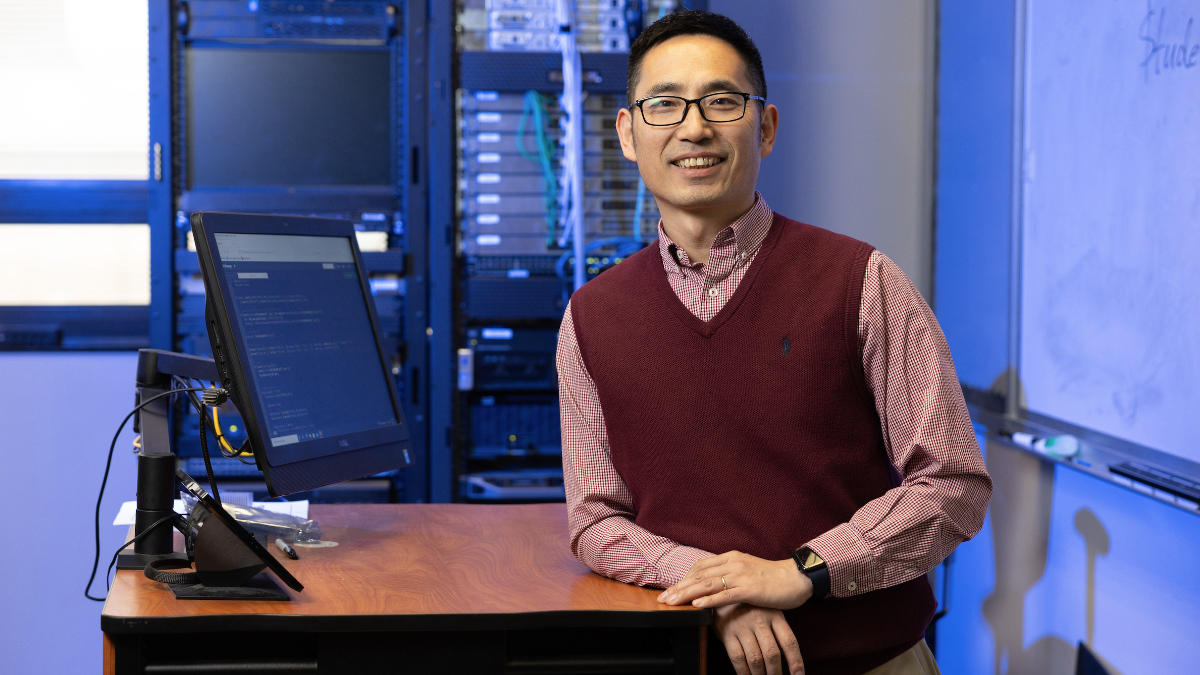
Innovating decision-making
For Dr. Lawrence Yang, an associate professor of information technology and cybersecurtiy at Missouri State University, they go together smoothly.
He explains that artificial intelligence and machine learning can predict human purchasing behavior. One example he uses is how the amount of frosting purchased will drop in conjunction with the spike in cake prices.
“I am interested in applying artificial intelligence to help solve business problems and better predict possible outcomes,” Yang said. It’s an interest that he began to focus on while pursuing his PhD.
“I believe AI has the ability to affect organizations’ decision-making skills in a positive and efficient way.”
Information overload
Artificial intelligence develops systems to perform tasks that normally require human intelligence, like decision making.
“Human beings are intelligent and can learn lots of information, but humans only have a certain number of years to learn that information. That’s our limitation,” Yang said. “Artificial intelligence has no limitations. We can insert millions of good and bad examples in these software programs in the matter of a couple of minutes.”
After that, the machine can predict the best course of action, Yang added.
 The answer to the question
The answer to the question
Dr. D. Sudharshan, Yang’s advisor and mentor, had a vision about how AI would shape the future. This inspired Yang, setting him on his current research path exploring the use of AI in business decisions.
Over the past six years, Yang has authored and co-authored six publications of research. All his research is centered around how businesses can better use technology to become more efficient.
For his most recent project, Yang focused on a typical business problem called cross purchases. These are products used together – like cake mix and frosting.
“First of all, we already know if you drop the price of anything, consumers are going to buy more of it. That’s a typical economic problem,” Yang said.
When the cake mix price dropped, Yang wondered if consumers would also buy more frosting when they filled their baskets.
But he’s not actually talking about people in a grocery store or sweet confections. Yang uses AI to learn the extent consumers make these cross purchases when one product’s price decreases.
Problems ahead
Yang is not the first researcher to focus on cross purchases in businesses. People have been researching it for years using economic models such as regressions and other statistical models.
“Artificial intelligence nowadays is very popular. A lot of people try to use it in all areas. And there’s many successful stories and exciting stories in natural science and now in business. As we know, artificial intelligence in general is, let a computer learn what we already know.”
But these statistical models are flawed, Yang noted.
“When you add too many dependent variables into these models, it is hard for the computer to give good reliable data,” Yang said. “This is a good place to think about using artificial intelligence and machine learning algorithms.”
According to Yang, machine learning can calculate solutions with multiple variables without sacrificing reliability.
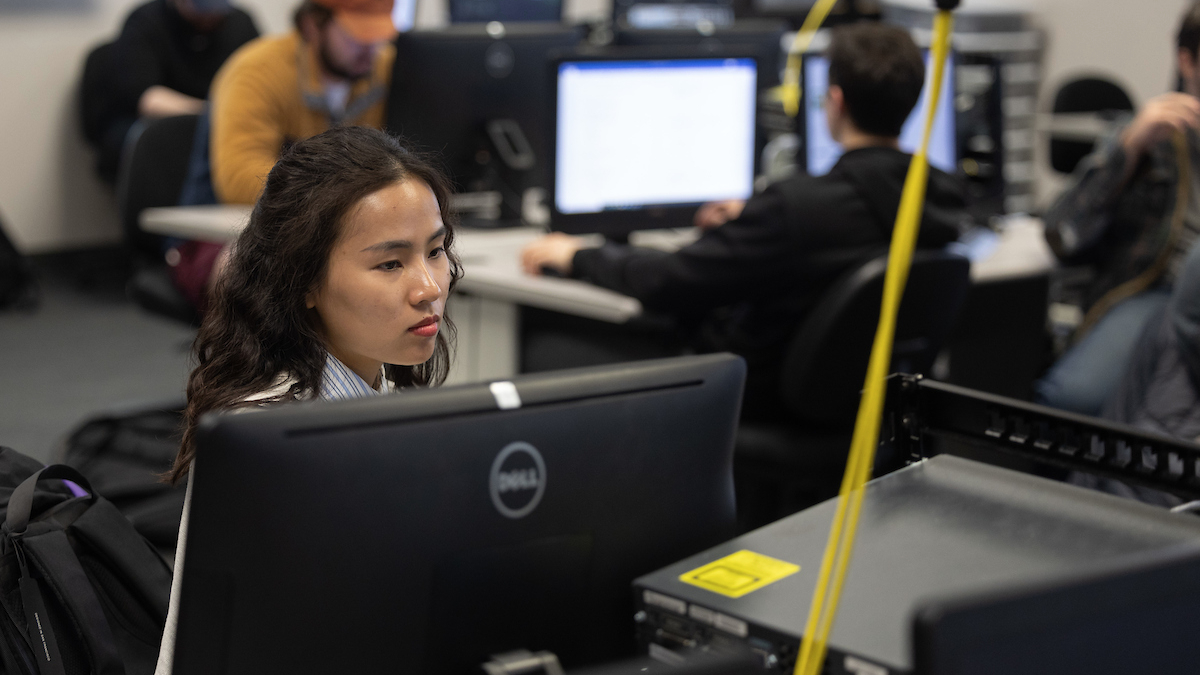
Student Linh Nguyen works on a problem in a computer lab.
Time is of the essence
To start his research, Yang obtained data sets from a public database, Nielsen Consumer Panel. Yang obtained raw data that had about 20,000 purchases in that data set.
With this data, he ran comparison tests between traditional models and AI. From it, he discovered something important.
When looking at four variables – like cake mix, frosting, detergent and softener – the traditional econometrics model could perform similarly to AI. In fact, it made the same purchasing decisions.
However, adding four more variables overwhelmed the econometrics model. It took two weeks to evaluate the relationship between those eight variables.
Using those same eight variables, AI and machine learning performed the analysis in only two hours.
“My dream project is artificial consciousness. Someday I can build a AI, so let AI have feelings, let AI able to protect itself, define itself, let AI know what’s the boundary between the AI itself and other counterpart. I mean, that’s my dream project.”
This was a significant learning experience for Yang. It showed just how powerful AI is in terms of bearing the load of big data.
“With this, businesses can use the data in real time and better make business decisions,” Yang said.
Yang is hoping to continue his research in artificial intelligence and learn more about how he can embed knowledge into AI.
“Dr. Yang is a very talented researcher who tackles contemporary problems using a wide range of research skillsets,” said Dr. Joshua Davis department head information technology and cybersecurity. “I am very impressed with the quality and diversity reflected in his research portfolio and am excited to watch it continue to grow.”
Yang plans to push forward his research into the realm of artificial consciousness. This refers to a non-biological, human created machine that is aware of its own existence.
- Story by Jonah Rosen
- Photos by Jesse Scheve
Further reading

Working through differences
It’s true. Teamwork can elevate a project and produce successful results. But it’s also common to hear – or feel – an exasperated groan at the mention of group projects. They can be laborious and frustrating.
“I love exploring these team or workplace interactions – both good and bad,” said Dr. Stephen Spates, assistant professor of communication at Missouri State University.
In his research, Spates works with a team of collaborators and co-authors on two interrelated topics. His primary research deals with how groups form and solve issues in health spaces. His secondary research focuses on how people interact when there is more diversity among group members.
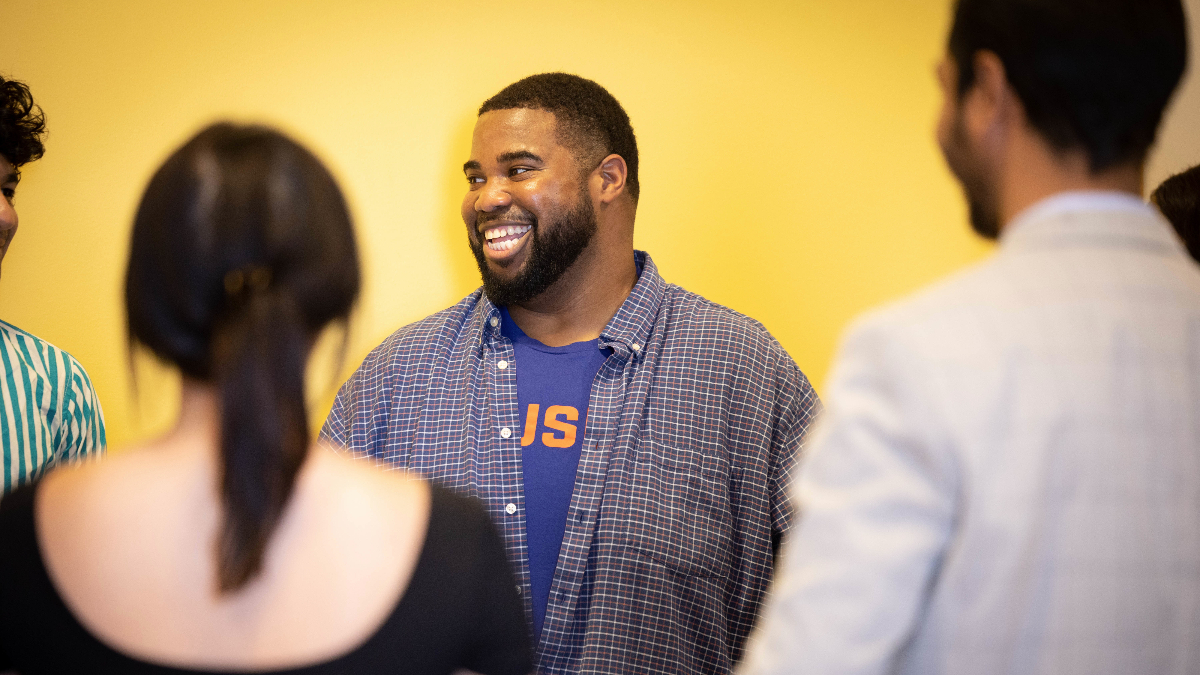
Dr. Stephen Spates poses questions like, “What happens when people from different cultures come together? What do those dynamics look like?”
Forming teams
In many health care settings, these transdisciplinary teams are the norm. Providers come together, share their approaches and give input about individual treatment plans or administrative decisions.
“While the focus from each perspective is a patient’s well-being and quality of life, physicians, nurses, social workers, surgeons and chaplains may attribute more or less value to different factors,” he said. “They ultimately may have very different ideas of what is best.”
In particular, the chaplain’s role has fascinated Spates since his time in health care marketing.
“I focus on workplace relationships when they’re good and when they’re not so good. That becomes the umbrella for my research.”
For a recent research project, he developed a case study about the challenges chaplains face in a team tasked with planning a new hospice-style hospital wing. For instance, chaplains’ opinions may be discounted since chaplains are not medical personnel.
This scenario is the basis for a 2020 published article, which also offers strategies and tactics for overcoming challenges like this in a health care team.
“We see a battle happening as the group struggles to accept and value the traditional medical voices and others equally,” Spates said.
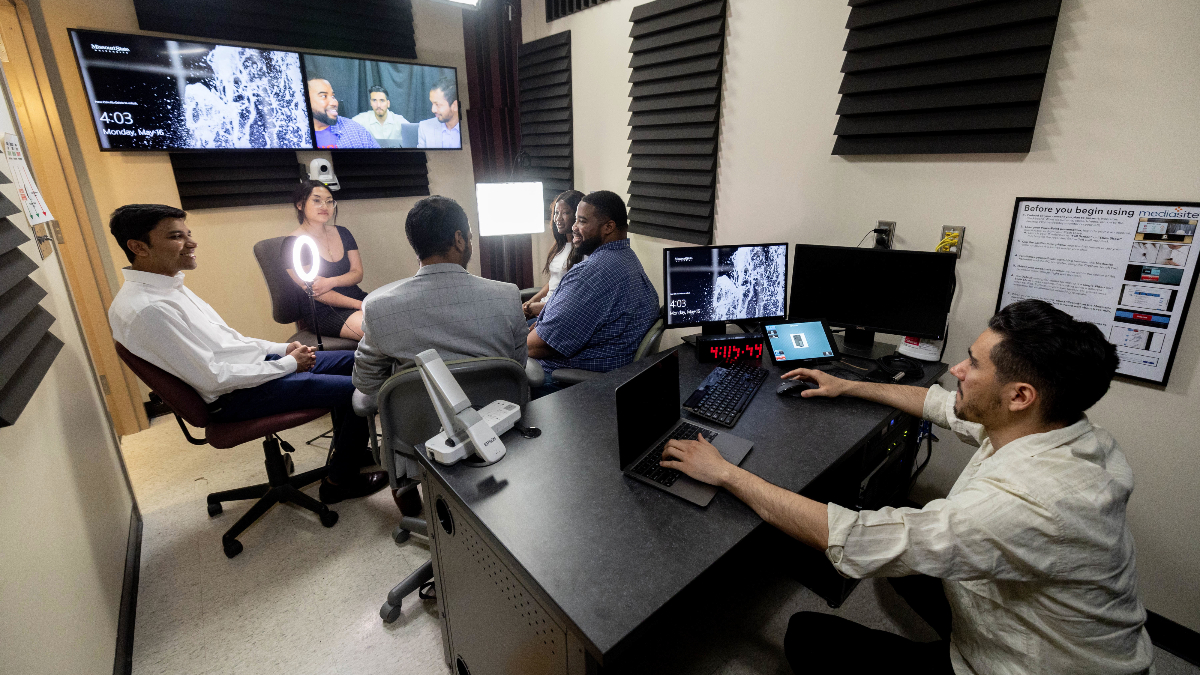
Having tough conversations and finding common ground: that is part of Dr. Stephen Spates motto. He does this in his classes and with his collaboration with Missouri State’s Ad Team.
Strategies for success
To succeed in these transdisciplinary teams, Spates’ article suggested members take time to build the team before tackling the task. This involves building trust and generating understanding about why each person was selected for the team.
Participants should contribute equally to discussion and brainstorming, Spates said. This can eventually help everyone value all the perspectives presented.
Spates also stressed that assignments should be delegated equally to ensure every team member is truly contributing.
“These challenges are common in organizations, but the hospital setting is unique because of the high stakes involved. You’re literally talking about life and death,” said Dr. Catherine Kingsley Westerman, associate professor of communication at North Dakota State University. She is a co-author on this study and a common collaborator with Spates.
“Coming up with some communication-based solutions for those teams was a great contribution.”
Now that Springfield, Missouri, has a chaplain training facility, Spates envisions collaborating on future projects to dive deeper into the experience of the chaplain.
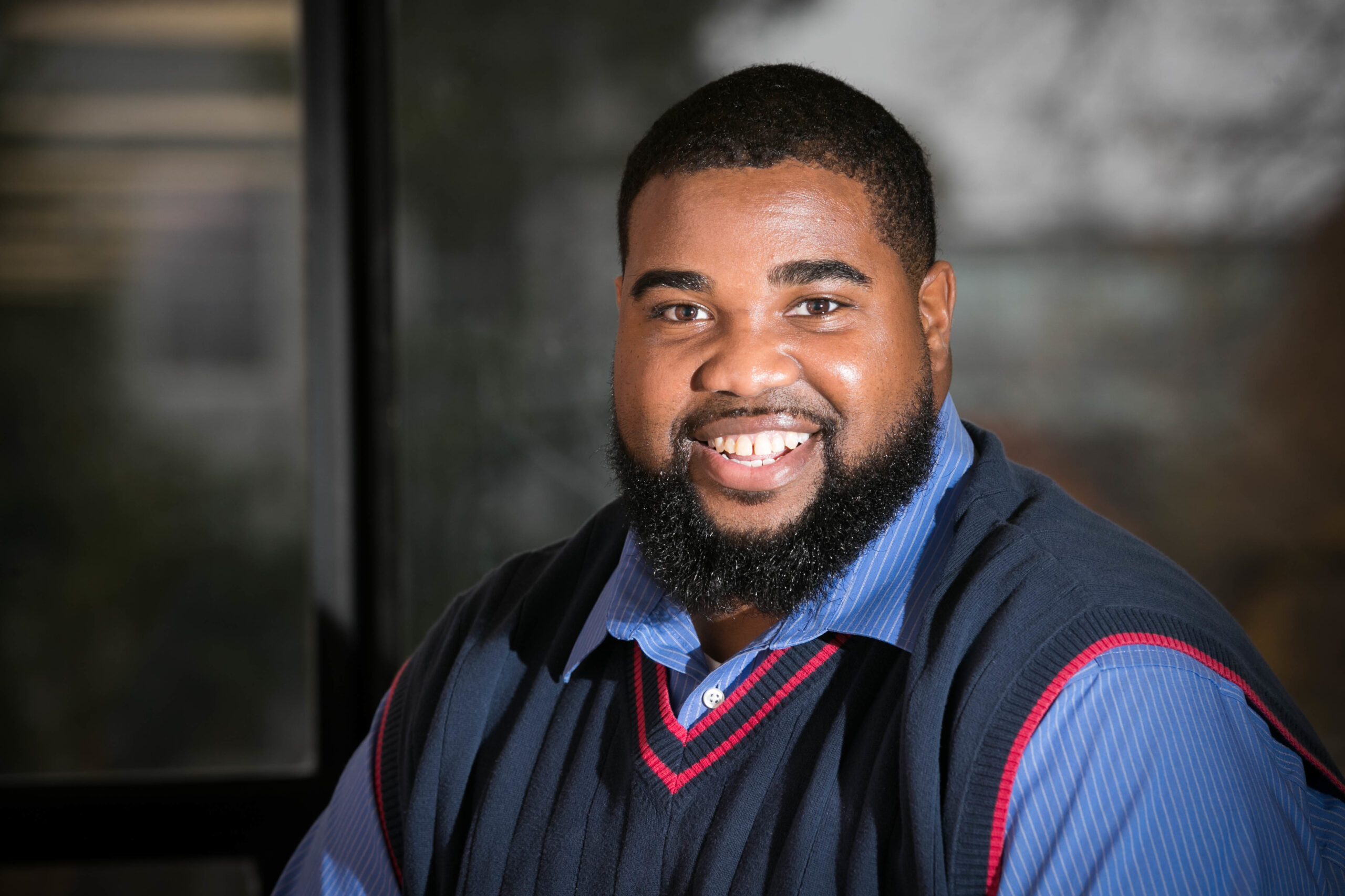
In his Introduction to Health Communication class, Dr. Stephen Spates encourages cooperation within transdisciplinary teams.
Increasing understanding
In his secondary research projects, Spates poses questions like, “What happens when people from different cultures come together? What do those dynamics look like?”
As an extension of this, he teaches a graduate course focused on communication and diversity in the workplace. In it, students discuss taboo topics.
“I like to say, what’s my next exploration, what do I want to explore now? And a lot of the titles of my works talk about exploring relationships.”
Then, they expand their understanding of how to work with people at opposite ends of the spectrum on these topics, which are often value-based.
“We navigate these topics that are part of our identities in different ways,” Spates said. “How do we – in our different perspectives – still work with people and communicate effectively?”
Making it a game
Because of this expertise, it was a natural fit for Spates to consult with Missouri State’s Ad Team in spring 2021. The U.S. Department of Homeland Security charged university advertising teams across the nation to compete to create an integrated marketing plan to prevent radicalization strategies.
MSU’s final project, Fuse, won second place nationally.
“It’s a game that allows people to come together and talk about some of these hot topics in a way that diffuses or deescalates,” he said.
Another reason he thinks Fuse stood out? Games force people to communicate, he said.
Spates employs gamification strategies in his classroom, too. In 2021, he published an article about the effectiveness of games in organizational communication classrooms.
“Games can get through in a different way to students,” he said. “And they can make complex concepts clearer.”
Though Spates is still in the infancy of his career, he’s already published multiple articles and contributed to industry encyclopedia entries and books. Not surprisingly, most of these have been as part of a research team.
“I love having multiple minds come together,” he said. “I want to see my work come out of the journal and jump into real life.”
- Story by Nicki Donnelson
- Photos by Kevin White

